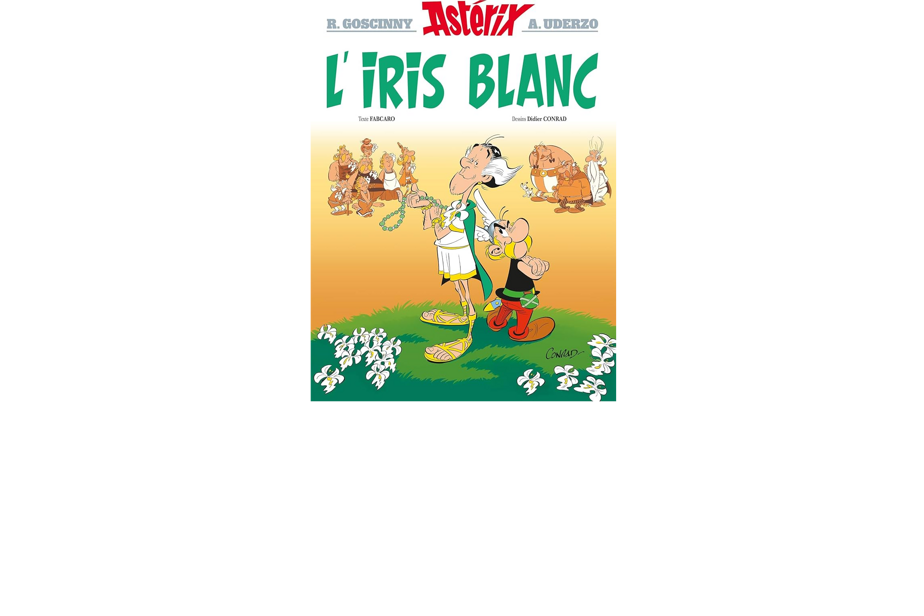(Vanves) He looks like Bernard-Henri Lévy and he speaks like Paulo Coelho: Asterix’s new enemy, Vicevertus, in The white Iris to be published on October 26, is a Roman philosopher adept at “positive thinking”.
This “bad guy”, created on the occasion of this 40e album, came from the imagination of a new screenwriter known for his sense of the absurd, Fabcaro.
Being at the helm of an Asterix comic book is the assurance of unrivaled sales. The white iris (48 pages) is published simultaneously in 20 languages, with more than 5 million copies worldwide.
This white Iris, “it’s a school. (Tulius Vicévertus) was inspired by a Greek philosopher to create his method,” Fabcaro explained during a press conference at Hachette Livre headquarters in Vanves, near Paris, on Monday.
And this will work, at first. Charged by Emperor Julius Caesar, to whom he was a doctor, to raise the morale of the Roman troops around the village of the “diehard Gauls”, Vicevertus was well received by the soldiers.
Variously meaningful aphorisms

PHOTO JULIEN DE ROSA, AGENCE FRANCE-PRESSE
From left to right: Obélix, the designer Didier Conrad, the author Fabrice Caro (aka Fabcaro) and Asterix
Better: he will instill division within the village. His school of thought and “personal development”, which advocates kindness, vegetarian diet and meditation, will find its supporters, like the wife of the village chief, Bonnemine, and its detractors, like the skeptical Asterix.
Fabcaro says he was inspired by a fan of aphorisms, the Brazilian writer Paulo Coelho. Those of Vicevertus are variously meaningful: “He who knows how to take advantage of the moment, he is the wise man”, “A closed door is an invitation to open others”, or even “Each path is the right one since it leads somewhere.”
It remained to draw it for Didier Conrad, who took over the pencil following Uderzo in 2013.
He initially imagined himself as a rather young seducer. But, with the screenwriter and the editor, the choice turned to a mature man with white, shoulder-length hair. “We started with people who were a little flamboyant: Dominique de Villepin, Bernard-Henri Lévy…” revealed the designer.
Asked to know if this Vicevertus was a caricature of the “wokists”, Fabcaro defended himself: “The idea is to be timeless. I try to distance myself from current events because, by definition, it is perishable.”
Each new Asterix album, despite the disappearance of its two creators (the screenwriter René Goscinny in 1977 and the designer Albert Uderzo in 2020), is a huge event in bookstores, every two years.
Fabcaro’s “Interim”?

PHOTO JULIEN DE ROSA, AGENCE FRANCE-PRESSE
“I’m just here as a temporary worker,” said Fabcaro (real name Fabrice Caro). But completely ready to continue the adventure, he confided.
“Asterix couldn’t be better,” said the general director of Hachette Livre Illustré, Isabelle Magnac. She noted the record attendance at Parc Astérix, in Plailly, north of Paris, with more than 2.8 million visitors in 2022.
Editions Albert René, which holds the rights, is one of the most profitable houses of Hachette Livre, a group in the process of being bought, with the rest of Lagardère, by Vivendi, controlled by billionaire Vincent Bolloré.
Since Uderzo’s retirement, the scenarios had been entrusted to Jean-Yves Ferri. He is taking a break to devote himself to the continuation of his series of parody comics on Charles de Gaulle.
“I’m just here on an interim basis,” Fabcaro said. But completely ready to continue the adventure, he confided. “I dream of Jean-Yves telling me: I’m tired, I’ll stop…”
Fabcaro (real name Fabrice Caro) received praise from the rights holders, Anne Goscinny and Sylvie Uderzo, daughters of the original authors.
“He reminds me of my father when he said: I only let go of a box, really, when I can no longer put a gag in it,” declared the first to the press.
